Tuesday, December 09, 2008
The man who cycles through glass walls part 2
In the second part of my interview with photographer Nico Hogg, the first part of which is here, Nico takes the time to talk though some of his shots...
Blackdown: The Thamesmead estate. This is the first shot of yours I ever encountered and it was my laptop desktop for some time. A black south London-born friend of mine saw it and shuddered, explaining that for someone who remembered the 80s, the Theamsmead Estate was synonemous with anti-black racism. What were you doing there at this time of the night? How long did it take?
Nico: "I think I'd been out in Central London one night and come the end I decided to jump on a night bus out here to see the place under the cover of darkness. I was amazed by the concrete madness of Thamesmead straight away - I don't think there's anywhere else in London that has that sort of urban chaos quite like this.
"One thing I learned from coming back to this place is that appearances can be deceptive; it isn't nearly as rough as first impressions give out, and there's a lot more to the Mead than just the grey estate here. It's still growing with new bits springing up every few years, and it's one of the few places a family might be able to afford to move to from inner London to raise a family – name a cultural group and they're here with their children, London's next generation.
"It's about people trying to get on with their lives to the best of their means. (And some of it is going amazingly, spectacularly wrong – blocks of flats built in New Labour's time sitting semi-derelict with weeds flourishing in pavement cracks.) The games are played out, new lines are drawn, new territories defined as the new streets arrive. It must've been the same every time a new bit of Thamesmead was built, from the sixties to today and it'll probably stay that way into the future as more of the place appears. That fascinates me, warts and all. I think perhaps this photo marked the beginning of coming to see the special in the place."
B: Becontree Heath. This is just pure light...
N: "A spot few Londoners know about, but one I felt like it was worth giving a bit of exposure."
B: Broadwater Farm Estate. This just looks epic, cinematic...
N: The other way round! A well documented place, difficult to get a shot of that could count as unusual. I was just riding through the rec on my bike when I saw the skate park flooded out and saw a rare opportunity. I wanted to try and get the tower blocks reflected in the water and it sort of worked, but I was kicking myself for leaving my tripod at home – I was balancing the camera on a bench for this.
B: South Kilburn Estate, NW6 - do you research the estates before/after you shoot them? Do you think 'estates' as a housing concept are successful?
N: "Yeah, I do a bit of research, especially if they're going to be coming down soon. I like to bring some background to the pictures, and some of these photos are already history in themselves just a few years after they were taken.
I think the view, the popular one, that dictates that estates should be pulled down, that's highly politicised. Some of these estates that are going really have failed, an entrenched rot that can't be shaken off, but sometimes I think the authorities are too quick to come to that decision to demolish, and that falls back to ideologies and agendas on their part.
I think basically speaking they work – and I like the extra layer of identity that coming from a certain estate has over, say, living in a terraced house in a street in a grid of streets.
But in a way the perception of that identity comes from the same sort of misty thought that says estates have failed, estates need to be pulled down, flamed in some sort of witch-hunt ritual. If you strip that layer of thought away, on the basis of it, people could (and can) live quite ordinary, happy lives within the estate – many do, and for them there's no reason why an estate isn't working for them. But the loudest get heard. It's about mindsets. Really though, it's hugely complicated."
B: This is North Woolwich, what can you tell me about this shot?
N: "This is one of my own favourites. You get a sense going to North Woolwich that it's a very different place to the rest of London – elements of an earlier time, shabby union jacks, graffiti that looks like it appeared in the 80s – some racist, some of it to do with class warfare. It's cut off on three sides from everything else by water, probably one of the hardest places to leave on many levels. It can feel pretty miserable."
B: Kurdish march, Stamford Hill: who and what were they marching about?
N: "They were marching for the leader of Abdullah Ocalan, the leader of the Kurdistan Workers Party serving a life prison sentence in Turkey. It was a pretty major march, there were a lot of people there. That part of North London has quite a large Turkish Kurd population, and they're in strong support for his release as far as I know. But it's a seriously complicated and contentious issue along ethnic, historical and political lines, and I really don't know enough about it!"
B: Sundermead Estate, Lewisham. Do you know anything about the fire damage?
N: "I don't think there was any fire involved here. The estate was being demolished and it's normal to have hoses running in to douse the rubble as it comes down, to stop any fires breaking out."
B: Looking west. Don't you think sunsets paint a very rosy picture of London? Is it a 'true' one? What about West London, how do you feel about it? It's different to the other quarters, right? And not one you choose to shoot much...
N: "I surprise myself at how few pics I have of West London, I'm across there a lot but it feels slightly alien to me in a way I haven't got to grips with yet. London is probably as different West to East as it is North to South, but there isn't a big river cutting down from the top of the city to the bottom to define the divide in the same way that the Thames does, so there's less debate.
But still, taking a trip on the Hammersmith and City Line west from Paddington gives one of the best pictures of the city you can get. It never loses its magic for me – out alongside the Westway, over the terraces around Ladbroke Grove, between the tower blocks round Latimer Road, over Shepherds Bush Market and the cranes of the new Westfield centre, stasis and change, success and failure sitting as two sides of the same coin. But it's all the same city, good and bad and I think it deserves to look beautiful sometimes, even if it is in a cheesy sort of sunset way.
"But eh, if there's a great sunset sky there's something reassuring in knowing that, even in a divided city, there are probably thousands of people from all different walks and minds seeing and thinking something at least similar to you for a few minutes. We could do with a few more unifying moments like that. It doesn't have to be sunsets – thunderstorms, raining tea, locusts, a good riot, anything [carnival? - Blackdown]. Just no more bomb explosions on the tube."
B: Do you use reflections in your work? Is the reality of the photo inevitably much less glamorous?
N: "It is, but this one is best seen in the context of all the other photos I have of that area. I feel a sort of personal responsibility, it's home to me and I was beginning to feel at the time that I was taking a lot of photos of the place in too much of a negative light. This one seemed to make a bit of a compromise on that. The opportunity was there and I jumped at it."
Read the first part of the interview here. The next parts of this interview will follow on soon...
Subscribe to:
Post Comments (Atom)
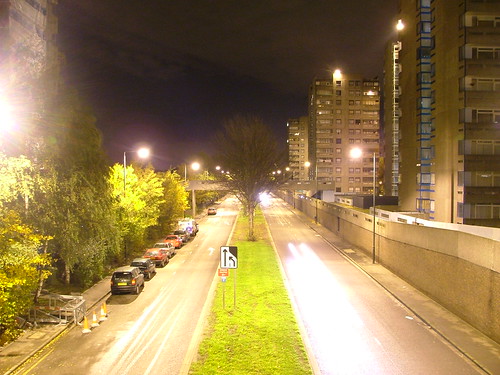

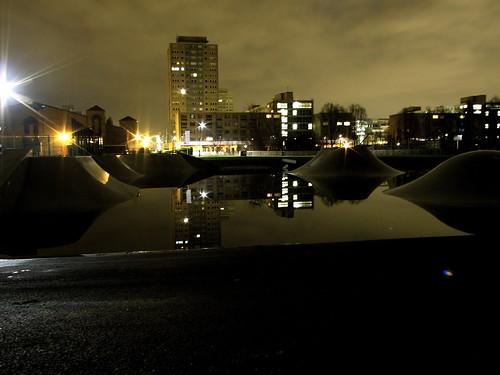
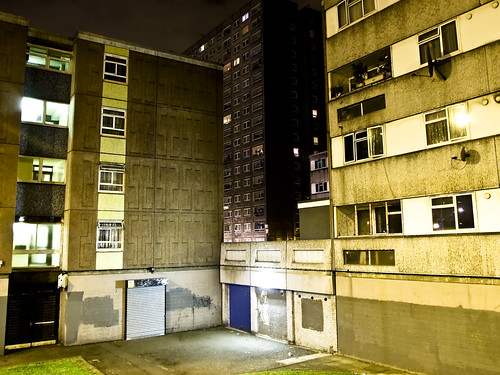


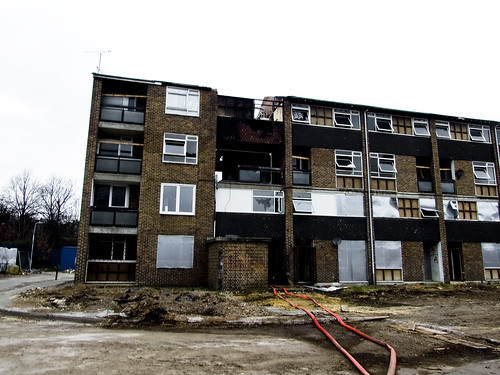
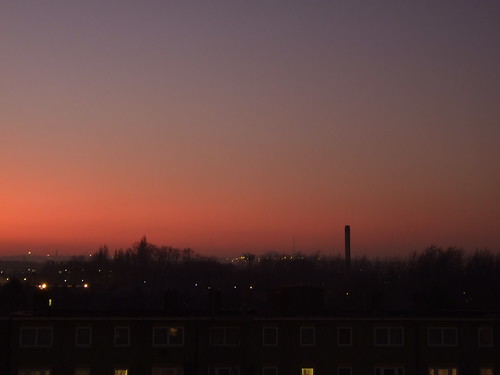
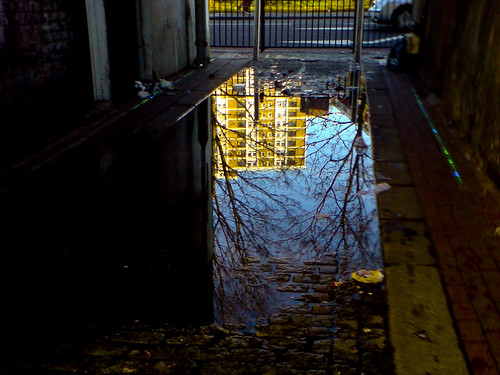
14 comments:
I work very close to those blocks in Woolwich. Never thought I'd see them look like that to be honest.
Some great photos here man.
Superb post, and incredible images.
Both these pieces have been brilliant. btw there are now at least two more images of crossways on flickr, cos I added them after reading the first piece.
rah tom bigup!
Also, about estates, and the politics of keeping them up or knocking them down, this is a very interesting book
http://www.guardian.co.uk/books/2007/jan/06/communities.housing
Great interview, very interesting, and great photos.
OK who knows what happened to the link in my last comment but the book is called Estates and it's by Lynsey Hanley. It's very good.
Tom your link points here. bigup. is the book good?
amazing post, possibly my favorite post on any blog in a long long time, its a great document of the city, and the photos are fantastic. I've never come across Nico before and am very pleased you've given him some publicity.
Great post Martin, inspired me to charge up my camera for the first time in a couple of years. Thanks!
just spotted your room 3 headline slot at fabric! nice one.
yup, and we're going to unleash a new tune we've been working hard on there. should be fun!
i love the photos
what a great post.
this pictures are simply great.
Post a Comment